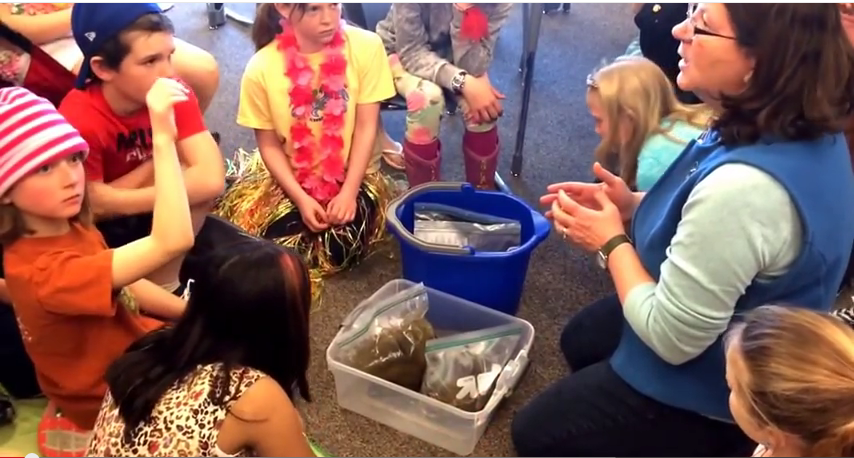Check out this awesome video, courtesy of Jeremy Harder, of the Ophir School Fourth Grade Class learning how the Gallatin River breathes.
In this interactive lesson, members of the MSU education department and the Blue Water Task Force worked together to teach the Ophir School Fourth Grade Class about the balance between photosynthesis and respiration in rivers and streams. Rose Vallor, of MSU education department, designed the lesson, which corresponds with upcoming research by members of the MSU ecology department on stream metabolism in the West Fork Watershed.
Stream metabolism or net ecosystem productivity (NEP) is the difference between the amount of energy created and used in an ecosystem. Scientists measure stream metabolism by monitoring changes in oxygen concentration throughout the day. Stream metabolism varies naturally with stream characteristics, including light and nutrient availability, water chemistry, and temperature. However, human disturbance such as, but not limited to, nutrient pollution and the disturbance of riparian (stream-side) vegetation has the potential to effect the net productivity of river ecosystems.
Studying stream metabolism provides scientists with a proxy for aquatic ecosystem health. Measuring net ecosystem productivity allows scientists to understand the effects of disturbance on the entire food web, from the primary producers (such as algae) to higher level consumers (such as trout).
In order to understand stream metabolism, students completed an activity designed to mimic the “light-dark bottle method” scientists use to measure stream metabolism. They measured the change in the amount of oxygen dissolved in water in two bags, one translucent plastic bag and one bag covered in duct tape, at the beginning and end of class. The difference in dissolved oxygen over a set period of time in the light bag represents the amount of energy created via photosynthesis while the change in dissolved oxygen in the dark bag represents the energy consumed through respiration.
While the students waited for energy to be produced and consumed in the bags, the class rotated through three stations. In two, they studied algae under microscopes. In the third, they observed the production of oxygen through photosynthesis by watching sections of an aquatic plant (Elodea) of varying length produce air bubbles. This spring, students will have the opportunity to apply their new found knowledge of ecosystem productivity in the field.

